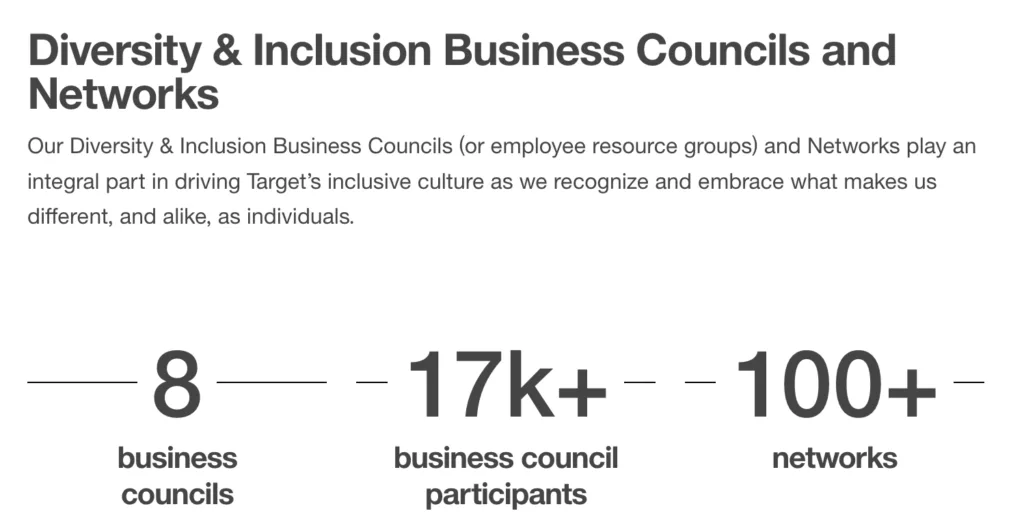Mentoring programs are never a “one-size-fits-all” strategy. Different factors influence the types of mentoring programs that make sense for each situation. Everything from the size of your company to your diversity metrics to your turnover rates could directly impact the programs you choose to create and how you structure those programs.
Before creating any more mentoring programs for your organization, stop right here. This guide offers up some deeper insights into:
- Common mentoring program types
- How these types are different and distinguishable
- Detailed use cases for each of these types
💡 An important note before you proceed: MentorcliQ supports every mentoring program format you can think of, including those we’ve covered below. Most mentoring software providers have limited support for unique program types or uncommon formats. Feel free to book a demo if you have a program need that you think could be potentially complicated, or even if it’s uncomplicated, but you need help getting started.
Types of Mentoring Programs to Consider
Let’s get right down to it, shall we? Are any of these true for you?
- You’re in the process of building new mentoring programs
- You’re trying to update or reformat existing mentoring programs
- You’re new to building mentoring programs, or you’ve recently been tasked with creating or improving a mentoring strategy for the first time
- You’re experienced with learning and development initiatives but don’t want to make build or update any programs without adequate research first.
Hopefully, I didn’t miss anyone. If I did, feel free to shoot me a message on LinkedIn and blow up my inbox with angry messages.
Some of those demographic and psychographic details matter, which we’ll get into as we dive in further. Just keep those in your head as we go along. For now, these are the 5 most common types of mentoring program formats you’ll find or can most easily create:

- One-to-One mentoring: One mentor, one mentee. This format is simple, easy, and the traditional approach.
- Group mentoring: One mentor, two or more mentees (although technically, this format could be multiple mentors and multiple mentees). This format can require a bit more navigating through the matching process, but fundamentally, it’s also a common approach.
- Mentoring circles (also called affinity circles): Similar but distinct from group mentoring. Mentoring circles allow you to support flexible connections for facilitated discussions among a circle moderator and circle members. This bold, innovative approach may require some extra planning to establish.
- Reverse mentoring: A junior-level employee serves as a mentor for a senior-level mentee. This format “flips the script” on the traditional mentoring dynamic. It’s also possible to combine this method with other formats, including 1:1 mentoring and group mentoring.
- Employee resource groups (ERGs) or business resource groups (BRGs): While not usually considered a type of mentoring, ERGs are increasingly places where mentoring connections form and thrive organically. Don’t count this out as a potential avenue for establishing structured mentoring within your organization for better visibility and data tracking.
Note that we’ve also linked to additional content for each of these types of mentoring programs. You may find value in exploring that additional and related content as you decide which types of mentoring work best for your organization.
Now that we’re familiar with each type let’s get a bit deeper. Time to extend those definitions, elaborate on each type, and give you a detailed use case for each of the types of mentoring program formats you might build.
Important Considerations When Choosing a Mentoring Program Format
The biggest mistake you could make when launching or revising mentoring programs is going in blind. There are numerous different factors to consider that will impact whether your mentoring program type works well to achieve your desired outcome.
Therein lies the biggest question when choosing a program: the outcome. What do you want to get out of your mentoring program? What’s the end goal you have in mind? That may dictate a large part the type of program you decide to launch, or how you restructure an existing program.
Here’s a list of considerations you can work from when trying to identify the right type of mentoring program format:
- Goals and objectives of the mentoring program
- Size of the organization and number of participants
- Resources and budget available to support the program
- Level of formality desired for the program
- Length of the mentoring relationships
- Frequency and format of mentor-mentee interactions
- Matching process for mentors and mentees
- Level of involvement from program administrators
- Evaluation and measurement of program effectiveness (such as employee retention)
- Cultural fit with the organization’s values and practice
As we dive more into the specific types of programs, think about how these might align with the program types that jump intrigue or interest you.
*How* You Match Matters
Download Our Free Guide on Matching Styles
One-to-One Mentoring Programs: The Traditional Approach
One-to-one mentoring programs (sometimes stylized as 1:1) is the traditional approach to mentoring. This type of mentoring has been around since the beginning of human existence. A one-on-one mentoring program usually has two very basic requirements:
- Someone who wants to learn a thing
- Someone who’s experienced in the thing
That’s about as basic as it gets. That doesn’t mean one-to-one mentoring programs need to or are ever truly basic. They’re still incredibly complex when done well.
What does one-to-one mentoring look like?
Most types of mentoring programs use a one-to-one mentoring format. This classic format for mentoring relationships allows for deep and meaningful conversations to occur between the mentee and mentor. The personalized development goals of the mentee are the focus of one-to-one mentoring relationships.
Some common examples of programs that leverage the one-to-one style of mentoring include:
- Onboarding Mentoring Programs
- High Potential Mentoring Programs
- Enterprise Mentoring Programs
- Functional Skills Mentoring Programs
- Leadership Development Mentoring Programs
- Flash Mentoring or Micro-Mentoring

One-to-one mentoring can be supported by multiple matching styles, from Self-Matching to Suggested Matching to Admin Matching to Smart Matching. MentorcliQ’s proprietary matching algorithm considers match scores, match rules, preference questions, and the popular Visual Personality Survey.
The one-to-one relationships can also benefit engagement, communication, and survey features. This includes any milestones you create for the program, goals the participants set, collaboration tools you connect for the relationships, and all satisfaction surveys.
One-to-one relationships can support traditional mentoring, coaching, sponsorship, reverse mentoring, skill-based mentoring, and more. How you define it is up to you.
One-to-One Mentoring Key Points Recap:
- Used for most types of mentoring programs
- Sometimes called Paired Mentoring
- Focuses on mentee’s development goals
- Can use all styles of matching (i.e., Self-directed, Suggested, Admin, and Smart)
- Takes into account match scores, match rules, preference questions, and the Visual Personality Survey when matching pairs
- Allows for full access to engagement features, collaboration tools, and surveys
- Supports traditional mentoring, coaching, sponsorship, reverse mentoring, skill-based mentoring, and more
One-to-one mentoring use case
Here’s a scenario to help you imagine what this might look like in practice:
Purple Logo Inc. is an enterprise organization with over 5,000 employees across multiple locations. To improve employee retention and engagement, the leadership team has implemented a one-to-one mentoring program. The program administrators establish goals and objectives and develop a matching process.
Mentors and mentees receive training on goal-setting, communication, and building trust. Mentors help mentees develop new skills, provide guidance, and connect them with other professionals in the organization. Regular meetings allow mentees to discuss their career goals and track their progress. The program offers valuable insights into the company culture and career paths and increases employee engagement, retention, and career development opportunities.
Group Mentoring Programs: The Resource-Efficiency Approach
There may be times when your company doesn’t have enough resources (e.g., not experienced leaders) to serve as mentors in one-to-one relationships. We encounter this issue rather frequently, especially among rapidly expanding organizations. The individuals who have been around for several years have gained valuable experience, insight, and internal knowledge, while a flurry of new hiring means that the average new hire needs significant development to get up to speed.
Having a strong knowledge-sharing culture will improve how quickly internal knowledge spreads. Group mentoring programs are an extension of that type of culture.
What does group mentoring look like?

Group mentoring is one of the more popular types of mentoring that can be useful when you have a limited number of mentors and want to utilize your resources effectively.
This format also makes sense when you have a specific expert in an area and want to have them share their knowledge with multiple people at once, such as when you want to facilitate specific topical conversations (e.g., diversity, equity, and inclusion topics) or upskill in an area (e.g., new practices the Sales department).
Group mentoring works best when you have one mentor and 6-10 mentees.
Depending on your program goal and structure, you may consider communications and milestones that promote a group curriculum or monthly discussion topics. Well-crafted scheduled communications and milestones can really help your groups connect, engage, and progress through the program.
Group Mentoring Key Points Recap:
- Used when there are a limited number of mentors
- Helps leverage specific expert resources/mentors
- Group sizes are flexible, but typically include one mentor and 6-10 mentees
- Focuses on shared topical goals
- Can use admin matching and rules-based matching
- Supports standard communication and measurement features
- Works best when scheduled communications and milestones are used
Group mentoring use case
Here’s a scenario to help you imagine what this might look like in practice:
CliQ-In Corp. recognized that a limited number of leaders were available to serve as mentors, making it difficult to offer one-to-one mentoring opportunities to all employees. They decided to implement a group mentoring program to provide more employees access to experienced mentors.
Group mentoring allowed for sharing of knowledge and experience among mentees and mentors alike. This approach helped to build a stronger sense of community and collaboration within the organization, which increased employee engagement and retention. The group mentoring program has provided mentees with access to experienced mentors who help them develop leadership skills, achieve their goals, and create a more successful career path.
The program’s success resulted in a stronger leadership pipeline for CliQ-In Corp., ensuring the company has the talent it needs to succeed. Group mentoring has proven to be an effective solution for a company rapidly scaling and facing limited mentorship resources, allowing them to provide more employees with valuable development opportunities.
Mentoring Circles (Affinity Circles): The Collaborative Experiences Approach
Mentoring circles are new types of mentoring engagements that share many similarities to ERGs. Multiple mentees? Check. Group leaders? Check. The similarities start to differ after that point, but this format is one that many companies have just started to hear about and explore in recent years. The key difference is that mentoring circles are far more focused on development and growth. This is not to say ERGs cannot be, but ERGs have a much broader focus.
In fact, as of this time of writing, “mentoring circles” and “affinity circles” draw only a handful of web searches on any given day. But don’t take that to mean it’s not effective. We’ve seen mentoring circles deployed very effectively; it all comes down to understanding when to use them and creating a strategic strategy and structure around making them work.
What do mentoring circles look like?
Mentoring circles work best when participants can create and moderate their circles (or on-demand groups) that meet regularly to discuss specific topics, share ideas, and provide a professional and collaborative space to learn and grow together. A single mentoring circle format can allow for unlimited topic-based circles. Circles often form around a factor of identity (e.g., a Women’s Network Mentoring Circle) or a specific interest (e.g., Remote Work Best Practices).
The size of each circle varies. However, a group of 8-12 members creates opportunities for meaningful connection, resource sharing, and accountability.
Participants in a mentoring circle program can join existing circles as members of the circle or start their own circle as a moderator. Most circles can be open and ongoing for years, with members joining at various points in their employee journey.
Most organizations launch mentoring / affinity circles with a few pre-seeded circles ready to accept members. Unlike one-to-one programs and group mentoring, circles often rely on resources and communications posted in the circle-specific area. Each moderator typically defines the engagement strategy. Participants can record time spent on circle activities in their QuickcliQs.
Mentoring Circles Key Points Recap:
- Employee-driven groups
- Often formed around affinity, identity, or topical matters
- Usually have 1-2 moderators and 8-12 members (but can be bigger)
- Focuses on sharing ideas and learning together
- Use self-directed matching
- Admin oversight of enrollments, circles, and reporting
- Moderators determine communications, resources, and engagement strategy
Mentoring circles use case
Here’s a scenario to help you imagine what this might look like in practice:
Glitzy Co. struggled to engage and connect its employees, especially with the rise of remote work. The company decided to use mentoring circles as an employee engagement strategy. Mentoring circles allowed the company’s employees to create and moderate on-demand groups based on specific topics or interests. For instance, employees created a Women’s Network Mentoring Circle and a Remote Work Best Practices Circle.
These circles provided a professional and collaborative space for employees to learn and grow together, fostering a sense of community and collaboration. By connecting colleagues with similar interests or identities, the circles helped break down knowledge silos within the organization and built a stronger, more cohesive workforce.
Reverse Mentoring: The Script-Flipping Format
Traditional types of mentoring programs across all formats tend to lead with the idea that the mentor must always be a senior-level leader in an organization. But there are times when those senior-level leaders struggle to grow and need some guidance from someone with more experience in areas they lack. And quite often, those individuals are junior-level employees.
Therein lies the rub, right? Do you stick with the traditional approach, or do you give leaders what they need to grow by dispensing with tradition and conventions? Many companies are choosing to do just that. While 92% of all Fortune 500 companies offer visible mentoring of some kind, the total number with reverse mentoring is currently unknown. But there are some notable examples, including General Electric (which pretty much invented it), Virgin Galactic, and KPMG.
What does reverse mentoring look like?
We’ll use “flip the script” two more times to get the point across here (that’s one). Reverse mentoring programs flip the script on the traditional mentoring dynamic (that’s two). Instead of having the mentor be a senior-level leader in the organization, this role is filled by a junior-level employee who has expertise in an area that a senior-level leader needs to learn.
Mentors and mentees are paired similarly to traditional mentoring programs. They’ll complete profiles based on preferences and personality types. Then, they’ll be matched.
Remember that you’ll have the opposite situation with mentor/mentee pools because the roles are reversed. Whereas traditional mentoring programs have a far larger number of mentees than mentors, the opposite here is true. You will have far more mentors to choose from, with a limited number of mentees.
This becomes an issue for junior-level mentors, as serving in this mentoring role could be a huge career-changer. You will want to be far more selective and strategic about who you choose to become a mentor in these programs. Doing so could help you boost leadership pipelines and meet your DEI goals.
Reverse Mentoring Key Points Recap:
- Non-traditional mentor-mentee dynamic
- Junior-level team members serve as mentors
- Senior-level team members serve as mentors
- Fits best with one-to-one mentoring program formats
- Can work with group mentoring strategies
- Works best with admin matching and SMART matching
- Commonly focuses on topics that arise due to generational differences
Reverse mentoring use case
Here’s a scenario to help you imagine what this might look like in practice:
Llamacorn Inc. was experiencing a lack of diversity in its leadership positions, with few women and people of color holding management roles. The company recognized the need to address this issue and decided to implement a reverse mentoring program.
The program paired high-potential diverse employees serving as mentees with senior leaders who served as mentees. The mentors guided their senior leader mentees through critical topics such as DEI, emerging technology, and engaging younger workers. These mentoring sessions helped leaders more authentically formulate their HR and technology strategies.
It also helped to foster a more inclusive workplace culture and established visibility for high-potential employees. Within a year, many of these reverse mentors had received promotions to leadership positions, with others on the radar for future promotions.
Employee Resource Groups: The Affinity Format with Mentoring Capabilities
We have a very long post about Employee Resource Groups that you can read right now. That being the case, we aren’t going to cover these in an excessive amount of depth. And chances are, of the types of mentoring program formats we’ve listed here, you’re very familiar with what ERGs are all about.
ERGs have been around for decades. They’re so common now that 100% of the DiversityInc Top 50 have ERGs, and 90% of Fortune 500 have them. This type of coverage is right up there with mentoring programs, meaning ERGs are fairly ubiquitous. But there’s a catch: companies often have more ERGs than they do mentoring programs, and the average participation in those ERGs tends to be bigger than the average participation in mentoring as a percent of the total population of workers at an organization.
That means ERGs are a perfect place to incorporate mentoring elements. Or, you can leverage ERGs to help launch mentoring circles, find mentors for reverse mentoring programs, or advertise for specific affinity-based mentoring programs, such as programs for Women, Veterans, or Black Talent.
What do employee resource groups look like?
Employee resource groups are employee-led affinity-based groups. Although commonly perceived to only cover or be provided to workers from historically marginalized groups, most companies with ERGs tend to cover far more distance than that.
ERGs can be about pretty much anything. The purpose they service is in the name: resource. They’re designed to be a resource for employees, where the information offered and community developed in those groups comes from other employees that fall within that affinity.

Retail company Target is perhaps one of the best examples of this. It calls its ERGs “networks” and boasts an impressive number of them: 100+.
Choosing to take the company at its word means Target probably has an ERG almost every employee could find themselves happy to associate with. Multiple, in fact.
Target doesn’t list every ERG it has, but its list includes some you’ll find at every organization, such as those for Black employees, Women, and LGBTQIA+, as well as some that are very uncommon, including a group for video gamers and one for a capella singers.
Note that this is where ERGs and the aforementioned mentoring circles (affinity circles) differ. While affinity circles are distinctly focused on learning and development, ERGs don’t necessarily have to be that rigid. That doesn’t mean ERGs can be organized, structured, and trackable from an HR perspective. They’re just not as business-focused. But they’re still business-critical.
Employee Resource Groups Key Points Recap:
- Employee-led and operated
- Self-selected enrollment
- Can be less structured than affinity circles
- Should be tracked and tied to HRIS data
- Excellent source for high-potential leadership
- Can be paired with a mentoring program structure or mentoring elements
Employee resource groups use case
Here’s a scenario to help you imagine what this might look like:
Champion’s Circle Group, a mid-sized organization, wanted to increase diversity in its leadership pipeline. To achieve this goal, they added mentoring elements to their Employee Resource Groups (ERGs), which already served as a space for employees to connect based on shared identities or interests.
Employees from historically underrepresented groups were matched with mentors who were in leadership positions. The mentors guided their mentees on career development, leadership skills, and networking. The program had a positive impact, as underrepresented employees reported feeling more supported in their careers and more prepared for leadership positions. Upon analyzing HRIS data, HR leaders found individuals who were both part of an ERG and mentoring programs aligned with those ERGs had among the lowest turnover of any group.
By integrating mentoring elements into the ERGs, Champion’s Circle Group provided employees who may have struggled with access to development and visibility at other organizations with the necessary support and guidance to advance their careers and increase their representation in leadership positions. This was an effective solution to their leadership pipeline diversity problem.
What Mentoring Program Types Should You Choose?
There’s no single answer for the types of mentoring programs that work best for your organization. We’ll reiterate the list above under the “Important Considerations” section. If you need a refresher, navigate back to that section using the table of contents on the right 👉.
Processing all of this information could be a challenge. And even with information at hand, you might find yourself in “analysis paralysis” mode as you try to determine your next steps. That’s what we’re here for!
Shoot us a line and book a demo. We’ll help you better understand how your program needs align with the types of programs you can launch. Better yet, we’ll help you see how easy it is to launch all types of mentoring programs using mentoring software.




